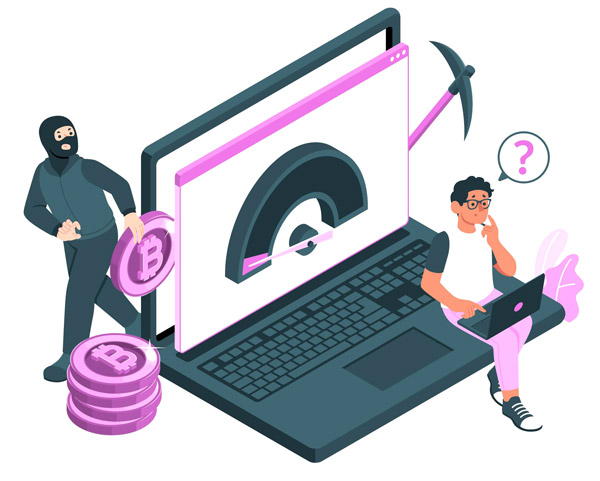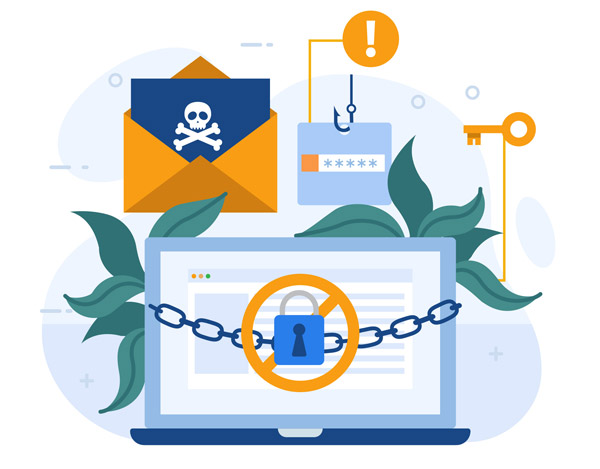In simple terms, using other people’s devices to mine cryptocurrency without their permission or notifying them in advance is called crypto-jacking. This action allows the attacker or hacker to mine various cryptocurrencies without incurring the costs of purchasing hardware or paying electricity bills. Instead, the victim is the attacked device owner who must pay these costs, and unfortunately, the crypto-lacking rate has been increasing since 2017.
The number of different types of crypto mining malware exceeds 470,000 unique types, excluded those delivered through web-based JavaScript activities. These viruses have affected 40 percent of Organizations across the globe. In crypto-jacking, the victim device or devices are affected by malicious software known as malware and allocates a part or an entire processing power of the device for mining cryptocurrencies.

Crypto-jacking hackers have no mercy, and all devices potentially can be their next prey, including PCs, laptops, smartphones, or even cloud servers, can be misused by them. Crypto-jacking software s intelligently designed to remain hidden from the sight of the victims, and it is like the relation between a parasite and the parasite-host body. This syndrome’s symptoms are the sensible slowdown in processing power of the hot device, a significant rise in electricity bills, and heating the device when charging.
Hackers’ victim devices have a shorter life cycle than anticipations, which usually comes into sight with hardware failure. In 2020 more than 69% of the Cisco Cloud Security customers were infected by malware, Cisco claimed.
How does crypto jacking work?
Crypto-jacking happens when an attacker installs a script on an electronic device such as a computer, smartphone, or cloud server infrastructure to use the device’s processing resources to mine cryptocurrency.
There are two basic ways to do Crypto-jacking:
- When the user downloads a file, it includes hidden malware that can automatically install itself after the file download accomplishes.
- The second method happens when the user has viewed a website with a hidden JavaScript code. That is where the malware runs the mining program.

The first method usually occurs when the victim opens unknown phishing emails that force them to download the attached file to the email. For example, the user may receive an email from a furniture company containing a PDF file of their products, or perhaps the trap could be a free game claiming no ads but using your device for crypto-jacking.
Installed malware can also automatically spread to other devices connected to the network. If victims realize the attack, removing malware from all devices connected to the network would be a costly procedure.

Monero, the most common cryptocurrency mined in crypto-jacking attacks
The second method is also known as “drive-by mining“. It occurs when the attacker’s desired code is attached to the website the user is viewing. Crypto-jacking usually stops after closing the browser tab or window and remains active until the user continues to view the website. Sometimes these scripts are also included in unwanted advertisements on various websites.
The most common cryptocurrency mined in crypto-jacking attacks is Monero “XMR.”
Since Monero is a private cryptocurrency, it is ideal crypto for hackers who use crypto jacking software, as it makes it easier to hide their tracks. Additionally, Monero’s special hashing enables CPU mining. It means, unlike Bitcoin mining, “XMR” is possible with standard equipment.

How to prevent crypto-jacking
- Avoid viewing links and phishing emails.
- Use of adblockers
- Disable JavaScript – Please note that disabling JavaScript will prevent users from using many features they need while using the internet and checking websites.
- Install antivirus and malware protection software.
Conclusion
Hackers are constantly creating and innovating different methods of infecting users’ devices and making a profit. The more information the owner of devices has, the better they can avoid being trapped by hackers.
